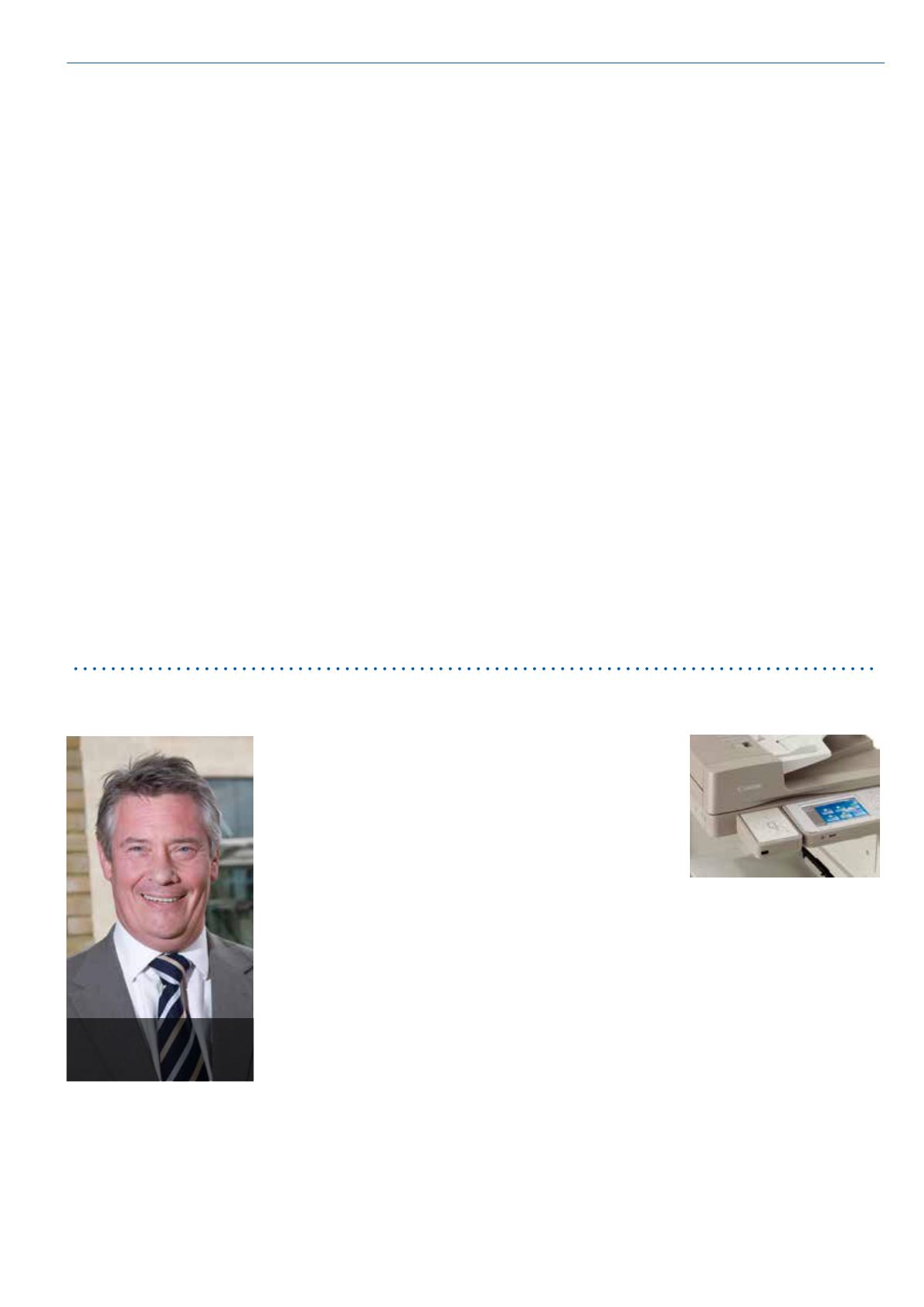
28
PRINT.IT
01732 759725
its intended job, being sent to
the recipient; the other 20%
is waste – it’s paper used in
the annotation process, in the
drafting process, in record-
keeping and in the sign-off
process as the draft goes
through revisions. If we can
eliminate that waste, we can
deliver savings very quickly,” he
explained.
“We can also have a
conversation with the client
about the 80%, because not
everyone is going to want this
document in paper format;
some may want it in electronic
format. We have a hybrid mail
capability where we can deliver
electronic versions to those
users who want it electronically
and paper versions to those
users who would rather have it
in a paper format. Or we could
talk to the client about moving
this whole application into
Xerox Content Manager so that
they have live information for
which they can publish updates
by email or another social
media application. This is a
much more interesting way of
Managed Print Services
looking at print data.”
As part of its Document
Analytics process, Xerox also
examines filing, typically the
second highest user of space
after people. It looks at how
much storage there is by site
and by department and uses
Xerox’s e-Filing module to
model the ROI from moving
filing out of the offices and into
Xerox Content Manager.
Maximising benefits
Andy Jones, VP Workflow
Automation, says that the level
of detail Xerox can achieve
with these enhancements
is essential in maximising
benefits for customers and of
avoiding costly mistakes.
“A lot of paper circulating
inside a business is performing
an important part of a process.
Sometimes, the paper itself
defines the business process
so if you remove the paper it
can be quite dangerous. For
us to help our customers and
make that migration safely, we
spend a lot of time investing
in our assessment services
to help us better understand
why the paper’s there and how
we can help the customer re-
design their business process,”
he said.
“All of us have been involved
in top-down business process
re-engineering projects that
normally happen with the
deployment of some enterprise
software system. Feedback
we get from customers is that
whilst these get core processes
under control and help
establish a source of record for
proof of information, they come
up short when it comes to
daily life inside an office. With
these assessment methods
we are trying to connect up
enterprise approaches by
providing a bottom-up people-
and paper-oriented approach
to understand workflows. By
joining the two together, we
will enable our customers
to optimise their business
processes and drive up their
productivity.”
Another benefit of the new
Document Analytics, says
Jones, is that they will help
managers make the business
case for workflow projects.
“Some of the work we’ve
been doing around assessment
methodology enables us to
work with the customer to
determine the true cost of
performing a process and
therefore help them build a
more compelling business
case to approve investment
in a new service. That’s one
key aspect. The second is that
customers aren’t interested in
18-month to two-year change
programmes. They want us
to have a set of services that
are relatively easy to configure
and implement so we can
go and drive implementation
within months as opposed to
years. That’s something we are
extremely focused on – to see
how we can utilise a modern
set of tools and work with the
customer in a very agile way
and implement and develop
electronic workflows that make
deployment easier and faster,”
he said.
Learning to cut costs
Blackpool Teaching Hospitals
NHS Foundation Trust (BTHFT)
has reduced its energy
consumption by more than
80% and print-related carbon
dioxide emissions by 74%
since implementing a managed
print service from Canon.
Currently entering the
second stage of a three-phase
implementation, the Trust is
saving an estimated £27,000
per year by consolidating
the number of print devices
deployed by 84%, by cutting
print volume by 15% and by
reducing colour output to less
than 10% of pages printed.
Following an audit, Canon
replaced the Trust’s existing
multi-vendor fleet of printers
and copiers with 233 Canon
multifunctional devices, which it
installed over a six-week period.
One of the Trust’s aims in
introducing the MPS was to
enhance device management
and improve document security,
which it has been able to do by
implementing Canon’s uniFLOW
integrated print and scan
management solution across all
eight sites.
As well as managing
and reporting on printing,
copying and scanning, the
solution increases document
security within the Trust by
requiring users to authenticate
themselves at a device using
their ID card. This helps
administrators apply printing
rules and ensures that a
document can only be accessed
and collected by the sender.
By making paper- and toner-
saving settings the default
on all machines, the BTHFT
expects to save approximately
4.3 million sheets of paper per
annum, equating to 520 trees.
Steven Bloor, Information
Manager at Blackpool Teaching
Hospitals NHS Foundation
Trust, said: “The new system
has not only improved the
quality of our documents, but
also introduced a more agile
and efficient workflow where
clinical staff can access their
printing from any of the site’s
MFDs.”
In the second phase of
the implementation, BTHFT is
planning to extend the solution
to all 80 of its sites.
Bob Pickles, Director, Public
Sector Business Development
& Public Affairs, Canon UK and
Ireland, said: “Canon UK has
a strong heritage of helping
organisations to reduce costs
and waste within the public
sector. We’re extremely pleased
to have supported the Trust
through the first phase of
the installation where they’re
already seeing significant
results, such as an estimated
annual saving of £27k.”
continued...
Bob Pickles, Director, Public
Sector Business Development
& Public Affairs, Canon UK


